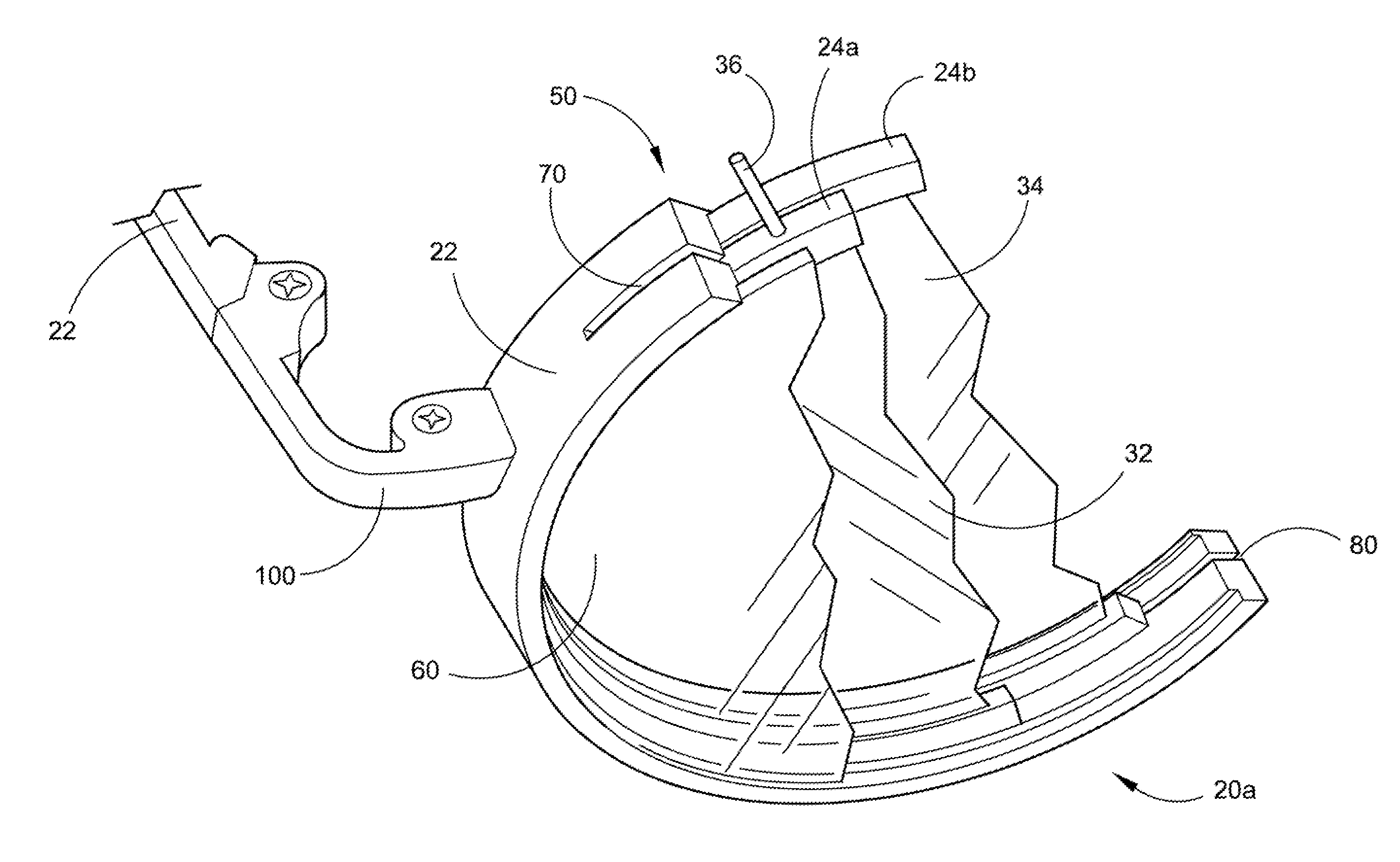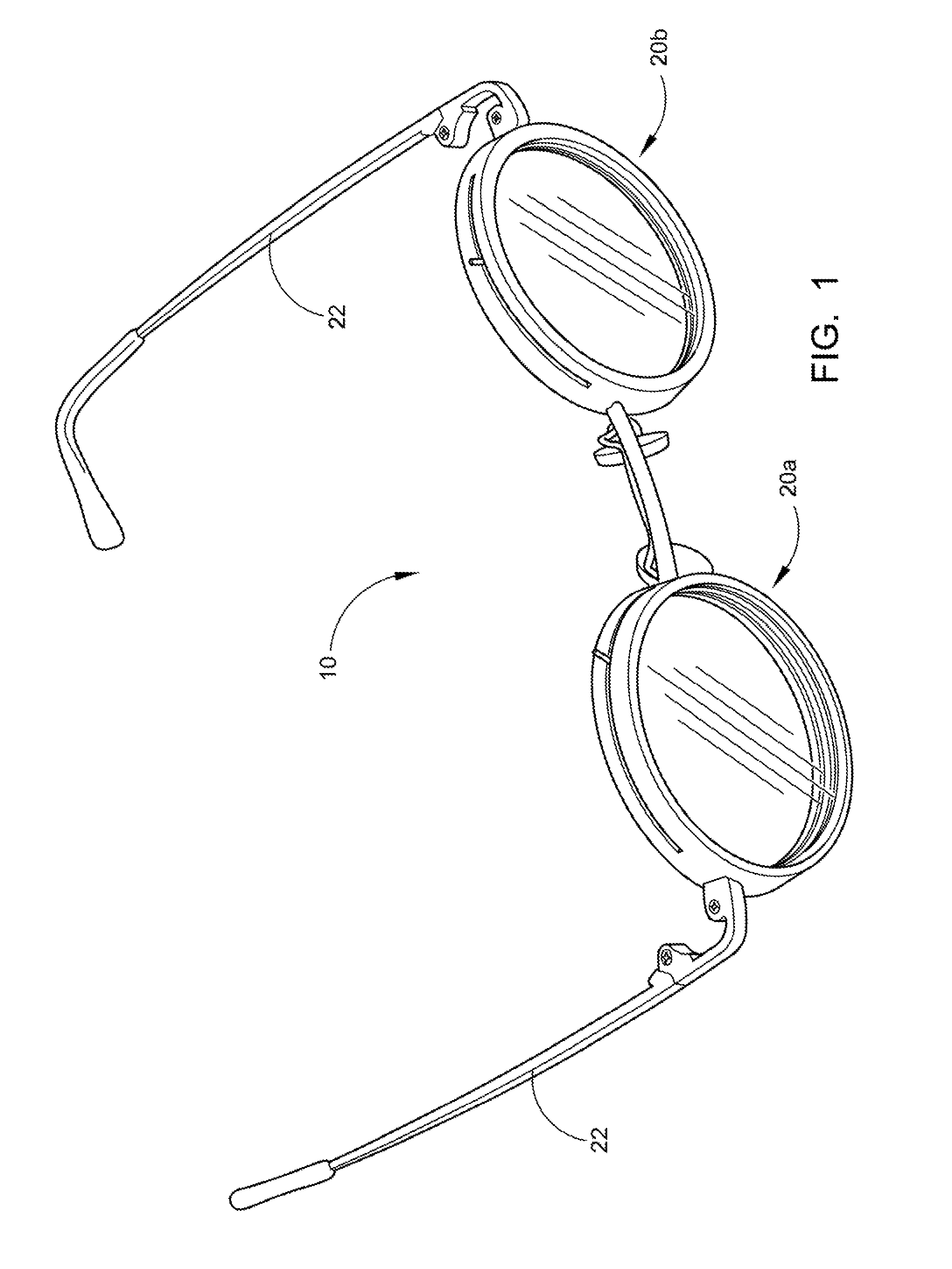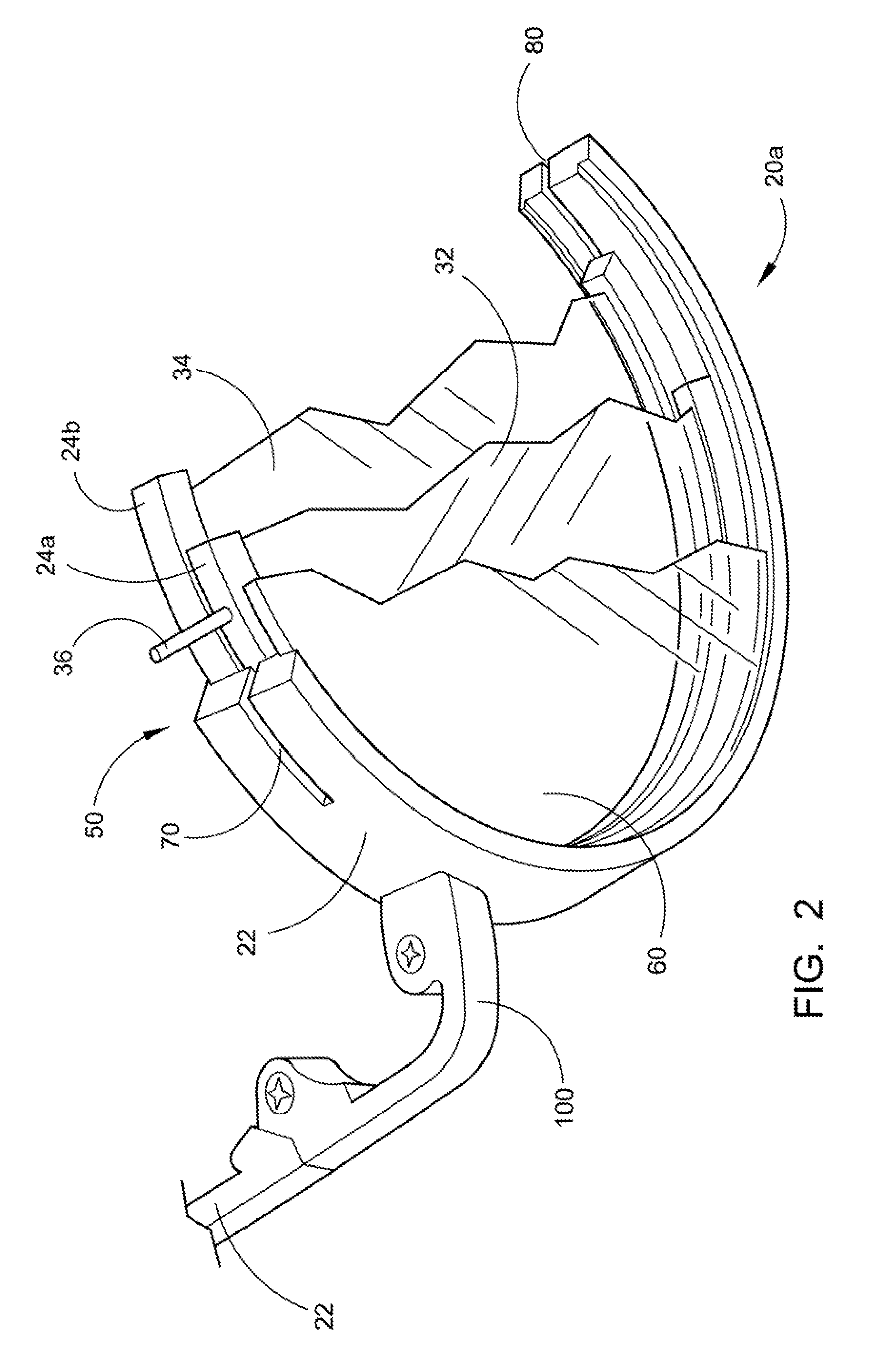Variable prism eyeglasses
a variable prism and eyeglass technology, applied in the field of variable prism eyeglass systems, can solve the problems of amblyopia (blindness) in the eye, false signals from the brain, and ineffective vision therapy of any kind, and achieve the effects of simple variable prism design, improved vision, and reduced risk
- Summary
- Abstract
- Description
- Claims
- Application Information
AI Technical Summary
Benefits of technology
Problems solved by technology
Method used
Image
Examples
Embodiment Construction
[0051]For a fuller understanding of the nature and objects of the invention, reference should be had to the following detailed description taken in conjunction with the accompanying drawings wherein similar parts of the invention are identified by like reference numerals.
[0052]The purpose of the Variable Prism Glasses (VPG) is to correct strabismus or if used passively, to allow the patient to live a better, more visually capable life with strabismus. As light passes through the VPG it is refracted to match the patient's degree of strabismus, or in the opinion of the patients health care provider, a refractive setting would be chosen which would be therapeutically more beneficial to the patient. Because the degree of strabismus varies throughout the day, the VPG can be adjusted to meet the patient's fluctuating needs. The ability of the invention to change its refractive properties to meet the needs of the patient is described herein.
[0053]Referring first to FIG. 1, a perspective vi...
PUM
 Login to View More
Login to View More Abstract
Description
Claims
Application Information
 Login to View More
Login to View More - R&D
- Intellectual Property
- Life Sciences
- Materials
- Tech Scout
- Unparalleled Data Quality
- Higher Quality Content
- 60% Fewer Hallucinations
Browse by: Latest US Patents, China's latest patents, Technical Efficacy Thesaurus, Application Domain, Technology Topic, Popular Technical Reports.
© 2025 PatSnap. All rights reserved.Legal|Privacy policy|Modern Slavery Act Transparency Statement|Sitemap|About US| Contact US: help@patsnap.com



